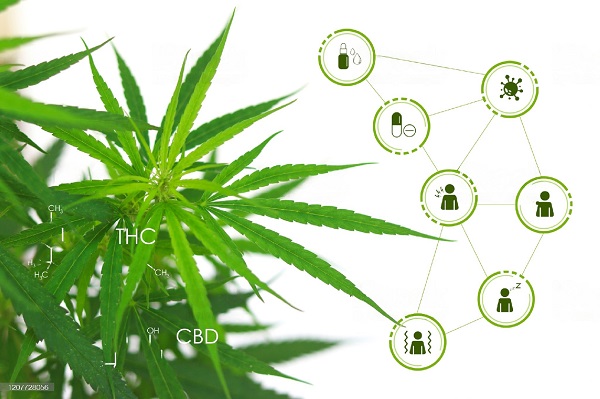In recent years, there has been a growing interest in the therapeutic potential of cannabis and its interaction with the endocannabinoid system (ECS). The ECS plays a crucial role in maintaining homeostasis within the body, and understanding how cannabis interacts with this system can provide insights into its diverse effects. In this deep dive, we’ll explore the fundamentals of the endocannabinoid system and how cannabis compounds, particularly cannabinoids, influence its functioning.
The Endocannabinoid System: An Overview
The endocannabinoid system is a complex cell-signaling system present in all mammals, including humans. It consists of three main components: endocannabinoids, receptors, and enzymes. Endocannabinoids are naturally occurring compounds similar to cannabinoids found in cannabis, and two primary endocannabinoids are anandamide and 2-arachidonoylglycerol (2-AG).
Receptors are located throughout the body, with CB1 receptors primarily found in the central nervous system, and CB2 receptors more abundant in the peripheral organs and immune cells. Enzymes, particularly fatty acid amide hydrolase (FAAH) and monoacylglycerol lipase (MAGL), are responsible for breaking down endocannabinoids once they have served their purpose.
Cannabis and Cannabinoids
Cannabis contains over 100 different cannabinoids, each with its own unique properties. The two most well-known cannabinoids are delta-9-tetrahydrocannabinol (THC) and cannabidiol (CBD). THC is responsible for the psychoactive effects commonly associated with marijuana, while CBD is non-intoxicating and has gained attention for its potential therapeutic benefits.
How Cannabis Interacts with the ECS
Cannabinoids in cannabis interact with the endocannabinoid system by binding to CB1 and CB2 receptors. THC, being similar in structure to anandamide, can bind directly to CB1 receptors in the central nervous system, leading to the euphoric “high” experienced by marijuana users. On the other hand, CBD has a more complex interaction, influencing the ECS indirectly by modulating the activity of receptors and enzymes.
Effects on Homeostasis
The endocannabinoid system plays a crucial role in maintaining homeostasis, which refers to the body’s ability to regulate and balance its internal environment despite external changes. Cannabis compounds can impact this balance by influencing various physiological processes, including mood, appetite, sleep, and immune response.
Therapeutic Potential of Cannabis
The interaction between cannabis and the endocannabinoid system has sparked interest in the therapeutic potential of cannabinoids. Medical cannabis is now being explored for conditions such as chronic pain, inflammation, epilepsy, and even mental health disorders. CBD, in particular, has shown promise in treating anxiety, depression, and certain forms of epilepsy.
Neuroprotective Properties
Research suggests that cannabinoids may have neuroprotective properties, potentially benefiting individuals with neurodegenerative diseases like Alzheimer’s and Parkinson’s. By modulating inflammation and oxidative stress, cannabinoids may help protect neurons from damage and slow the progression of these debilitating conditions.
Challenges and Considerations
While the therapeutic potential of cannabis is promising, challenges exist, including legal and ethical considerations, standardization of products, and the need for more rigorous scientific research. The variability in individual responses to cannabinoids also underscores the complexity of the endocannabinoid system and the need for personalized approaches to cannabis-based therapies.
Conclusion
The relationship between cannabis and the endocannabinoid system is a fascinating area of study with far-reaching implications for medicine and wellness. As our understanding of the ECS and cannabinoids deepens, researchers, healthcare professionals, and policymakers can work together to unlock the full potential of cannabis as a therapeutic tool. Whether it’s managing chronic pain, mitigating inflammation, or addressing mental health concerns, the future of cannabis-based medicine holds promise for a more holistic and personalized approach to healthcare.






